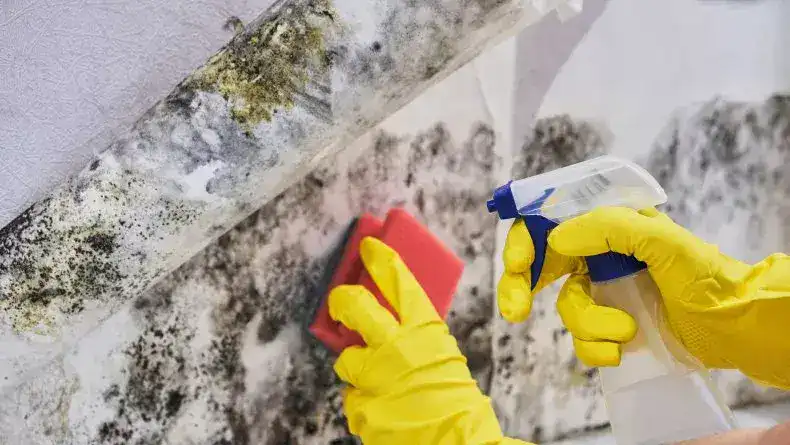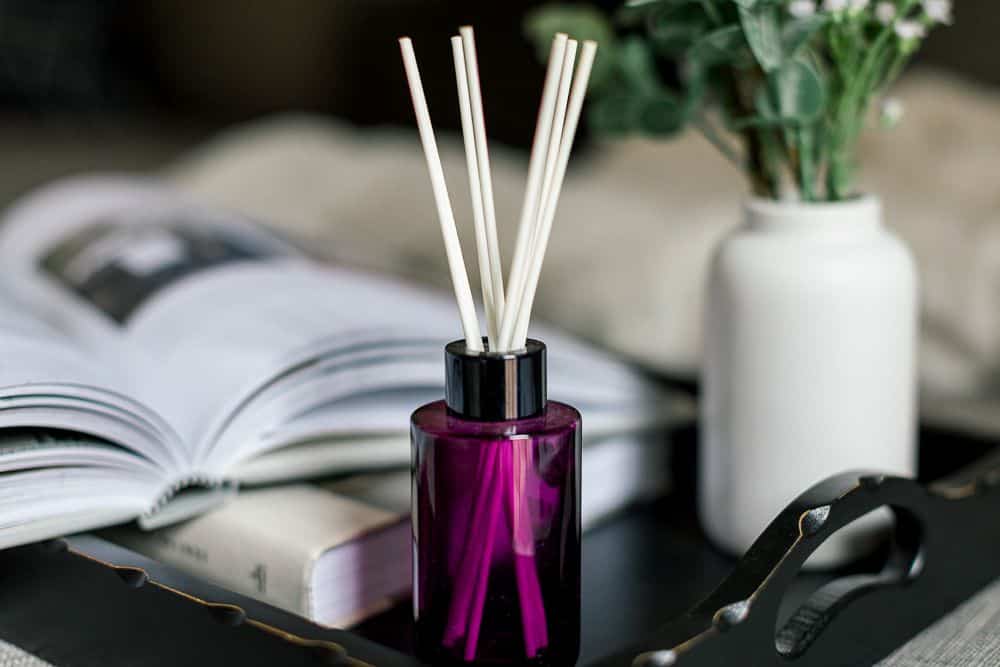Last Updated: July 26, 2025 by Katerina Lithopoulou
Fact checked by Anastasios Moulios
Black mold is more than just an unsightly stain—it can pose serious health risks. From allergy-related respiratory problems to long-term illness, black mold should be handled swiftly and safely.
This toxic mold, often greenish-black in appearance, thrives in damp, humid areas and spreads quickly if untreated.
The good news?
With the right tools and know-how, you can eliminate black mold yourself. This guide offers step-by-step instructions, natural and commercial cleaning recipes, and practical tips to help prevent black mold from returning.
Locate the Area with the Black Mold
Black mold often hides in plain sight—or out of it. It thrives in areas with moisture, including bathrooms, under sinks, in basements, and behind furniture.
Begin by inspecting these areas for visible mold or that signature musty odor. If you’ve noticed unexplained allergy symptoms or persistent dampness, these may be warning signs.
Carpets, in particular, are vulnerable due to spills and pet accidents. Look in corners or behind large furniture where moisture might have gone unnoticed.
How to Identify Black Mold
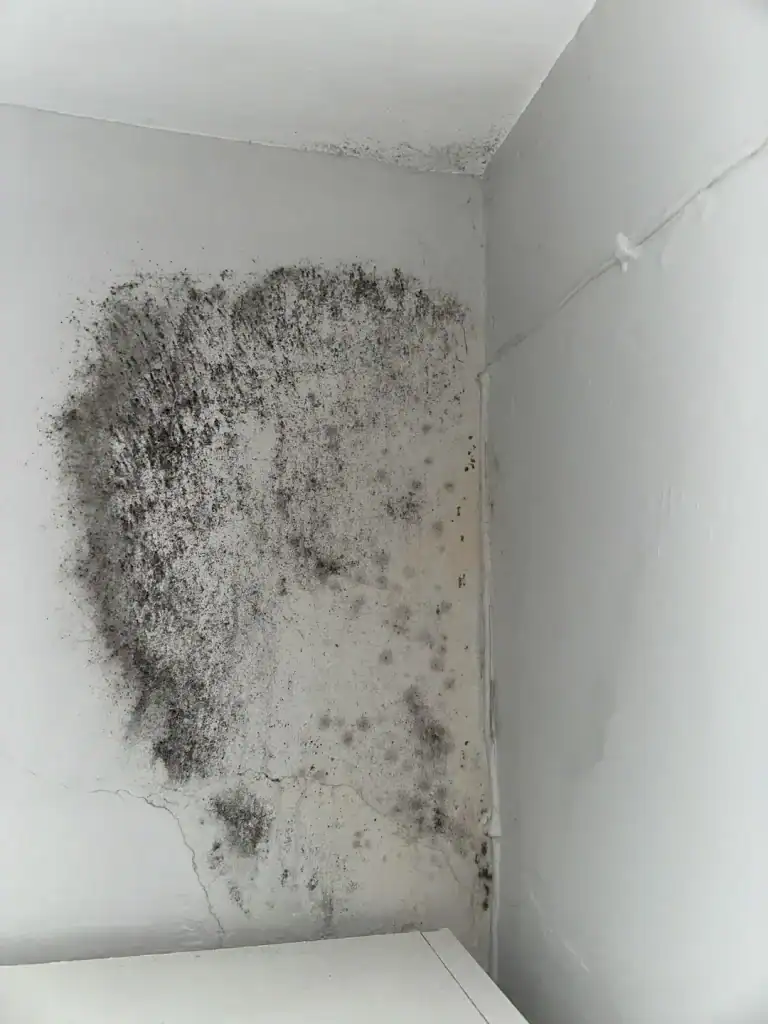
Mold isn’t always black. Mildew, which appears white or gray, may resemble mold but typically wipes away more easily.
True black mold (Stachybotrys chartarum) is often dark greenish-black, slimy, and embedded into porous surfaces. If a damp spot doesn’t dry with time and shows black discoloration that spreads or emits a foul smell, it’s likely mold.
For confirmation, pull back carpet edges or inspect behind baseboards. Mold may grow beneath the surface, especially on drywall, insulation, and under carpets.
Know When to Call in the Professionals
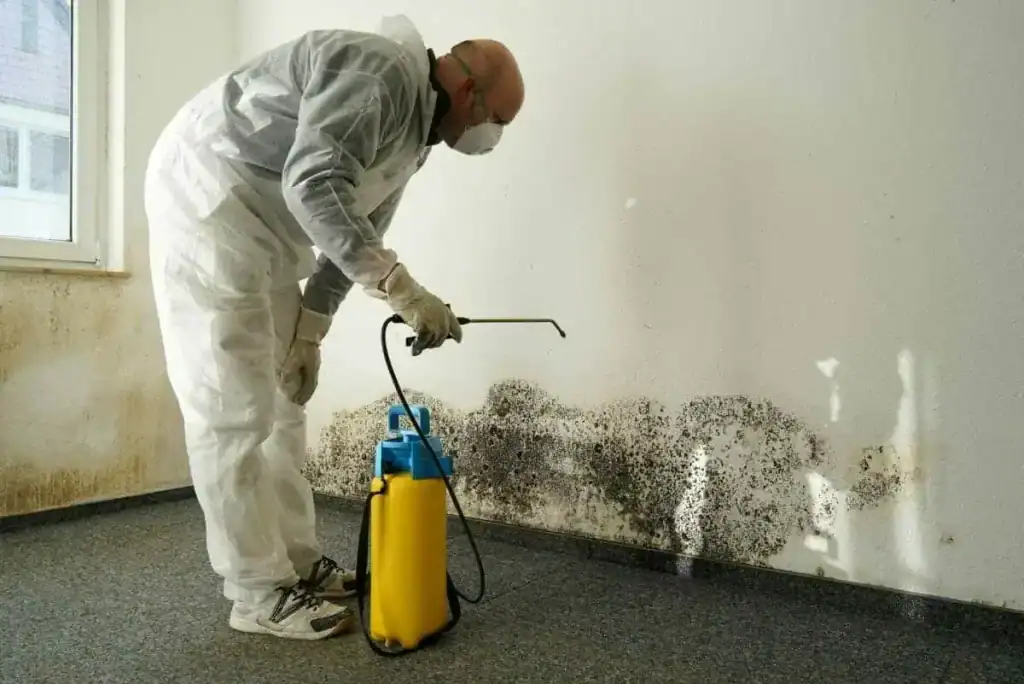
If the affected area exceeds 10 square feet, it’s time to consult a certified mold remediation specialist. Professionals can safely remove large infestations and check for hidden mold in HVAC systems or structural elements.
Small mold problems can often be handled by homeowners, but always prioritize safety.
Use the Proper Equipment when Cleaning Black Mold
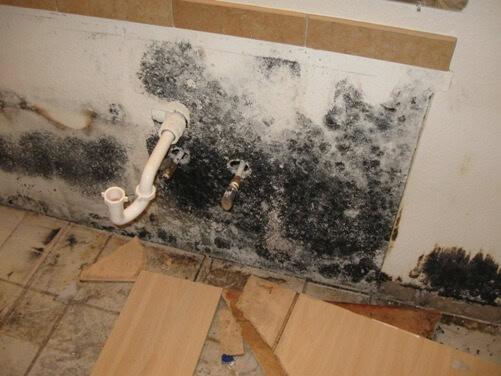
Before beginning cleanup, protect yourself with the following gear:
- Rubber gloves
- N95 respirator or mask
- Safety goggles
- Long sleeves and pants
- Spray bottles
- Scrubbing brushes
- Old toothbrush (for grout)
- HEPA vacuum (optional)
- Steam cleaner (optional)
Ensure proper ventilation by opening windows and using fans. Avoid mixing cleaning agents—especially bleach with vinegar or ammonia—as this can create toxic fumes.
How to Clean Black Mold from Carpets
For minor mold in carpets:
Black Mold Carpet Cleaner with Vinegar
- 1/2 cup white vinegar
- 1/2 cup water
- 1 cup baking soda
- Optional: a few drops of essential oil (like lavender)
Spray the vinegar and water mix onto the moldy area. Let it sit for 10 minutes, blot with a cloth, then sprinkle baking soda generously. Allow to dry overnight and vacuum thoroughly.
Replace Vinegar with Hydrogen Peroxide for a Potent Mold Killer
Hydrogen peroxide is another natural antifungal that works well on light surfaces.
Hydrogen Peroxide Mold Cleaner
- 3/4 cup hydrogen peroxide
- 1 1/2 cups water
- 5 drops lemon essential oil
Spray the mixture, let sit for 15–20 minutes, scrub, and blot dry. Test on an inconspicuous area first—hydrogen peroxide may lighten dark fabrics.
Try Steam Cleaning for Killing Black Mold
Steam cleaning kills mold at high temperatures and works well on fabrics and tile.
DIY Mold-Fighting Carpet Shampoo
- 2 tbsp liquid laundry detergent
- 1/4 cup all-purpose cleaner
- 1/4 cup oxygen bleach
- 1 tsp fabric softener
- 1 gallon hot water
Add this solution to your steam cleaner’s reservoir or apply it manually before steam treatment.
All-Purpose Black Mold Cleaner with Tea Tree Oil
Tea tree oil is a powerful natural fungicide with a pleasant scent.
Tea Tree Mold Spray
- 2 tsp tea tree oil
- 2 cups water
Shake in a spray bottle and apply to affected surfaces. Do not rinse. Let air dry for long-lasting protection.
Use Bleach to Kill Mold on Lighter Surfaces
Bleach is effective on non-porous surfaces like tile or bathtubs.
Bleach Mold Cleaner
- 1 cup bleach
- 1 gallon water
Scrub the moldy surface and allow it to sit for 10–15 minutes. Rinse thoroughly. Always ventilate and never mix bleach with other cleaners.
Add Borax to Vinegar to Remove Black Mold from Tiles
Borax prevents future mold growth. Combine it with vinegar for added power.
Tile Mold Cleaner with Borax
- 2 tsp Borax
- 1/2 cup white vinegar
- 4 cups water
Scrub tiles with the solution, allow to air dry. Repeat as needed.
Clean Black Mold Using Grapefruit Seed Extract
This citrus-based cleaner is great for sensitive areas like kitchens.
Grapefruit Mold Spray
- 10 drops grapefruit seed extract
- 1 cup warm water
Spray affected areas, let sit, and wipe dry. No rinse required.
How to Remove Black Mold from Tile Grout
Grout needs a stronger scrub. Try this paste:
Grout Mold Cleaner
- 1/2 cup baking soda
- 1/4 cup Borax
- 1/4 cup disinfectant (like Lysol)
Apply with a toothbrush, scrub vigorously, rinse with clean water.
Use a HEPA Vacuum to Reduce the Presence of Mold
After removing visible mold, use a HEPA vacuum on floors and upholstery to capture lingering spores. Dispose of the vacuum bag outside immediately.
Use Oxygenated Bleach to Clean Moldy Areas without Discoloration
OxiClean and other oxygen-based cleaners remove mold without bleaching.
Oxygen Bleach Mold Cleaner
- 2 gallons hot water
- 2 cups oxygen bleach powder
- 1/4 cup dish soap
Apply to surface, let soak 15 minutes, scrub, and rinse.
Ensure Proper Air Ventilation at All Times
Mold thrives in stagnant air. Use exhaust fans in bathrooms and kitchens, open windows when possible, and avoid overcrowding furniture against walls.
Leave a Dehumidifier Running in the Basement
Keep basement humidity below 50%. Run a dehumidifier during humid months and empty the tank regularly.
Use an Enzymatic Cleaner on Pet Stains to Prevent Mold
Pet stains, if not cleaned, can lead to mold. Enzymatic cleaners break down organic waste at the source. Blot excess liquid, spray enzyme cleaner, and let air dry.
DIY Mold and Mildew Remover Recipe
This all-natural mold remover works on tile, walls, grout, and even bathroom ceilings. It’s safe, effective, and easy to make at home.
Homemade Mold Spray
- 1 cup white distilled vinegar
- 1 cup distilled water
- 1 teaspoon tea tree oil (or 10 drops)
- Optional: 1 teaspoon baking soda (for extra scrubbing power)
Instructions:
- Combine all ingredients in a clean spray bottle.
- Shake well before each use.
- Spray directly onto moldy areas.
- Let sit for 30–60 minutes.
- Scrub with a stiff brush or sponge.
- Wipe clean or rinse, and dry thoroughly.
📌 Tip: For porous materials like drywall or wood, test a small hidden spot first.
Final Pieces of Advice About Black Mold
What causes mold?
Mold spores exist naturally in the air. When combined with moisture and organic material (like dust or paper), they grow rapidly. Leaks, flooding, humidity, and poor ventilation are all common culprits.
What is the difference between mold remediation and mold removal?
Mold removal eliminates visible mold. Mold remediation addresses the root cause, removes damaged materials, and restores safe mold levels indoors.
When in doubt, act fast. Address leaks, reduce humidity, and clean early. Mold is easiest to remove when caught early—and you’ll protect your home and health in the process.
I’m Anastasios Moulios, co-founder of DIY Cozy Living. I enjoy finding creative, practical ways to make small spaces feel warm, stylish, and lived-in — whether it’s a camper, a backyard, or a cozy room inside. I started this blog with Katerina to share real ideas that make home feel a little more personal and a lot more comfortable.

